Angkor Wat Vishnu Temple Invites You To Embrace A Tranquil Experience In 2025
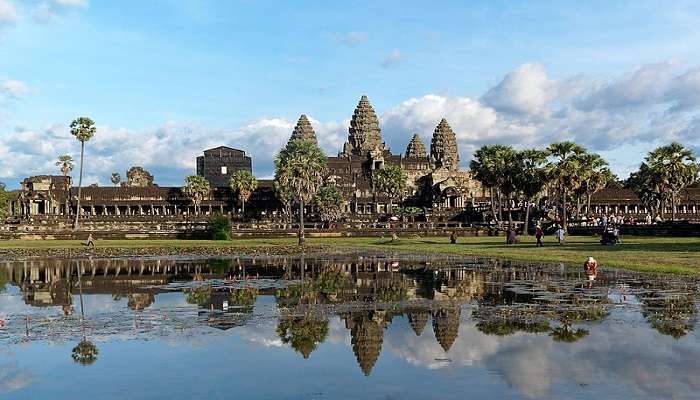
The largest religious temple to ever be built in the world, Angkor Wat Vishnu Temple, is in Krong Siem Reap, Cambodia. The Buddhist temple complex was initially built as a Hindu temple, dedicated to the God Vishnu from 1116 CE to 1150. Built in the ancient city of Angkor, 72 major and hundreds of minor temples are surrounded by it. It is made of an impressive moat that surrounds the entire temple as a protective barrier, with the main sanctuary hidden within the five stone towers and spans over 400 acres of land. The architectural design of the temple has been constructed to depict Mt. Meru. The intention behind building the temple was not only to pay homage to lord Vishnu but also to assert the political power of the King.
Delve Into The History Of Angkor Wat Vishnu Temple
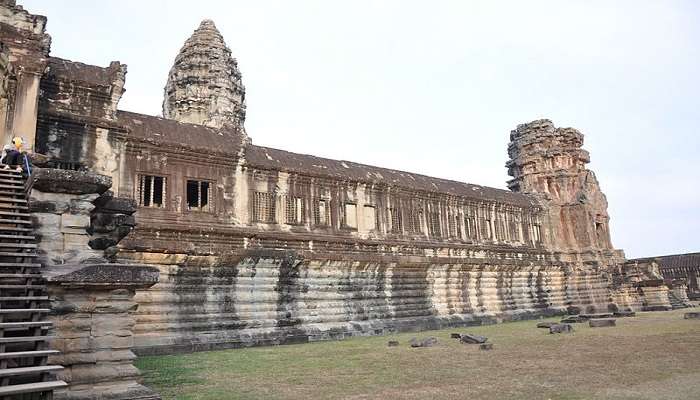
In the 12th century, the temple was a Hindu temple complex built for Lord Vishnu, who is part of the Holy Trinity (Brahma, Vishnu, and Shiva) according to Hindu mythology. He is also called the ‘Protector’ amongst the three gods. Coincidentally, King Suryavarnam II, who had the temple made, his name translates as ‘Protector of The Sun’.
In ancient times, kings often built temples to pay homage to Gods and establish their influence. The bigger the temple, the wider their power and dominance spread across kingdoms. Similarly, The Cambodian king, King Suryavarnam II built the Angkor Wat Vishnu Temple to establish his political power. It was believed the grandiose of the temple decided whether it was a worthy home for Gods, and if it was, then that showed the enemies and the predecessors of the King of his influential power.
Must Read: Cambodia Honeymoon
Angkor Wat Vishnu Temple – Lost Or Forgotten?

The temple is referred to as the Lost City Temple, or was it truly lost? This way of reference to the temple could rise due to the Western narrative of it being discovered by Henri Mouhot, a French explorer in the 1840s. Situations such as wars, earthquakes, overgrown forests, etc, may have caused some damage to the city and the temple, but it was never lost to the people of the Khmer culture. They continued to live peacefully, hidden away from the rest of the society.
When terms such as ‘lost’ or ‘abandoned’ are used, it removes the importance of the place’s and people’s pre-existing indigenous data. Though not directly rude, language is a weapon against such societies and gives power to the more ‘civilised’ population. This only allows the ‘founders’ of such “lost cities” to colonise such places as they believe local or indigenous societies need to be tamed. It is too late to change its reference to the lost city, but it is important to know the history from all perspectives rather than just the Western one.
The city of Angkor is home to many temples with walls carved out of stone. These carvings are stories that scholars believe are life lessons that the people of Khmer culture learned from their previous generations and taught the same to the new generations. The temple walls have faced the test of time, and though they have been brunt to few damages, they still stand tall and proud. These walls convey their lessons through visual representation.
The Seventh Key Of Angkor Wat Vishnu Temple

The carvings are called keys and symbols, and seven exist: the snake, the bird, the five towers, the stepped pyramid, the seven steps, the world axis, and the legend of the churning of the sea milk. All in all, history buffs and zealots can have a wholesome experience while exploring the temple.
Suggested Read: Places To Visit In Cambodia
The Legend Of The Churning Of The Sea Of Milk
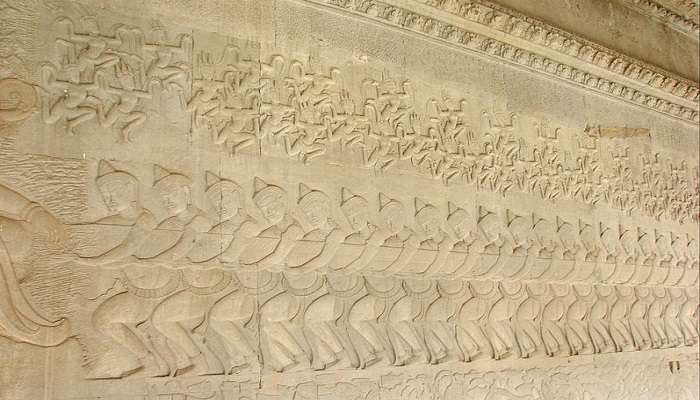
History buffs and devotees will all find this legend very interesting. The seventh key, or the legend of the churning of the sea milk, is one of the most famous narratives in the temple.
It depicts the story between good and evil, restoring peace and unity. Lord Indra had been tasked with churning the sea milk to attain the elixir of life or amrit. However, he was warned that the gods could not carry out the task alone, so they had to work with the demons or asuras. Mt Meru was used as the stick to churn the sea, and Vasuki, the great serpent, was used to move the stick. It almost seemed like the demons and gods were playing a tug of war to earn the elixir. However, the stick or Mt Meru kept slipping away from its place. Lord Vishnu came to the rescue by turning himself into a sea turtle to stabilize the kerning stick.
Slowly, with time, the gods and demons accepted each other and worked in unison rather than a tug of war. Their hard work and unison were rewarded with many boons or gifts such as Airavata, the elephant vahana of Lord Indra, Apsaras, courtesans of the sky, Kalpa Vriksha, a wish-fulfilling tree, etc. This story of the churning of the milk sea is the story or key that unites all the seven keys of the Angkor Wat Vishnu Temple that teach the meaning and importance of life through its carved stones.
Rules To Know To Visit Angkor Wat Vishnu Temple
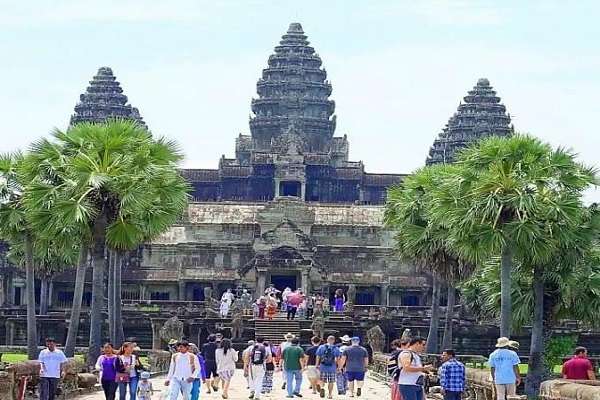
The Angkor Wat Vishnu Temple is a sacred and religious place for the local people, and certain rules and regulations must be followed so that people from all regions and religions can enjoy their visit.
- All tourists must strictly follow the dress code: Their elbows and shoulders must be covered. If tourists or locals are not dressed modestly, they will be barred from entering. Touching, vandalizing, or looting are strictly prohibited within the temple, as there are grave consequences, such as imprisonment or deportation.
- Photos should be taken only with permission.
- The temple is frequented by the monks in the area, and they must be respected and not disturbed.
- In Cambodian culture, being loud and creating noise is considered disrespectful. A temple is a sacred place and must be treated as such.
- Any place labelled as ‘No Entry’ must be taken seriously. Though the temple is open for tourism, it is wise to remember that some parts of the temple complex are still in ruins and could be dangerous to venture into.
How To Reach
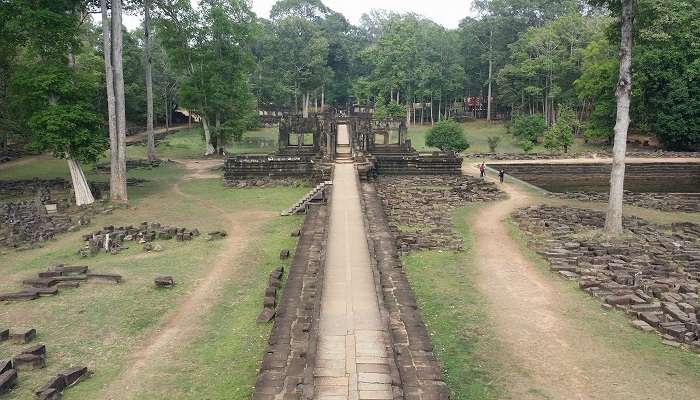
By Road: The Angkor Wat temples are just 5.6 km from Siem Reap town. The cheapest way to get there is by taxi, which costs about $7.
By Air: Direct flights to Siem Reap are available only from Bangkok and Singapore.
Further Read: Kachanh Waterfall
Visiting Cambodia and not experiencing the divinity and peace at Angkor Wat Vishnu Temple is an absolute miss. Enjoy the positive vibes and seek blessings for a better future. So, plan your trip to Cambodia with loved ones for the best time.
For our editorial codes of conduct and copyright disclaimer, please click here.
Cover Image Credit: Jakub Hałun for Wikimedia Commons
Frequently Asked Questions About Angkor Wat Vishnu Temple
Why is Angkor Wat Vishnu Temple famous?
It is famous for its vast size and the largest religious monument in the world. It is also famous for its age and its architectural marvels.
What does Angkor Wat mean?
In Cambodian, Angkor means ‘city’ and Wat means ‘temple grounds’. Together its means “City Temple”. However, we still don’t know how this temple was called around the time it was built.
Who was the temple built for?
This temple was built for Lord Vishnu. Vishnu is the god of preservation in Hindu mythology.
What are the temple’s opening hours?
The Angkor Wat Vishnu Temple is open between 5 am and 5:30 pm.
What is the entry price?
The ticket prices depend on the duration for which you want to stay within the temple complex. The one-day pass is for $37. It is very much worth it because the temple is very large and there is much to explore.
People Also Read:
Dalai Lama Temple Champavati Temple Someshwar Mahadev Temple
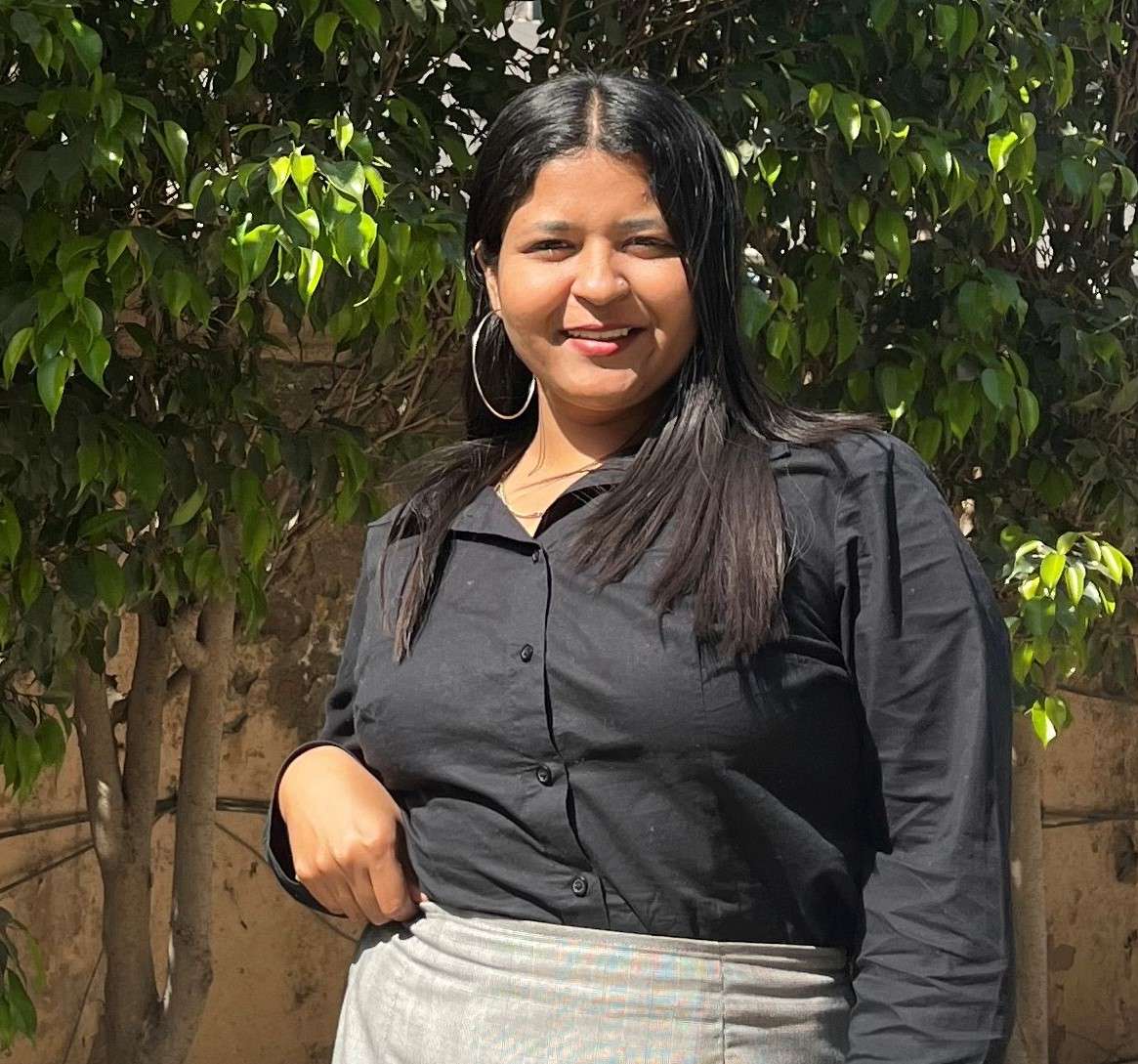
Embrace the essence of surreal places around the world through perfect narratives with a touch of imagination. As a content writer, I weave my ideas and words together to create a vivid picture of alluring destinations. Embark on limitless adventures as you read thrilling travel stories.











